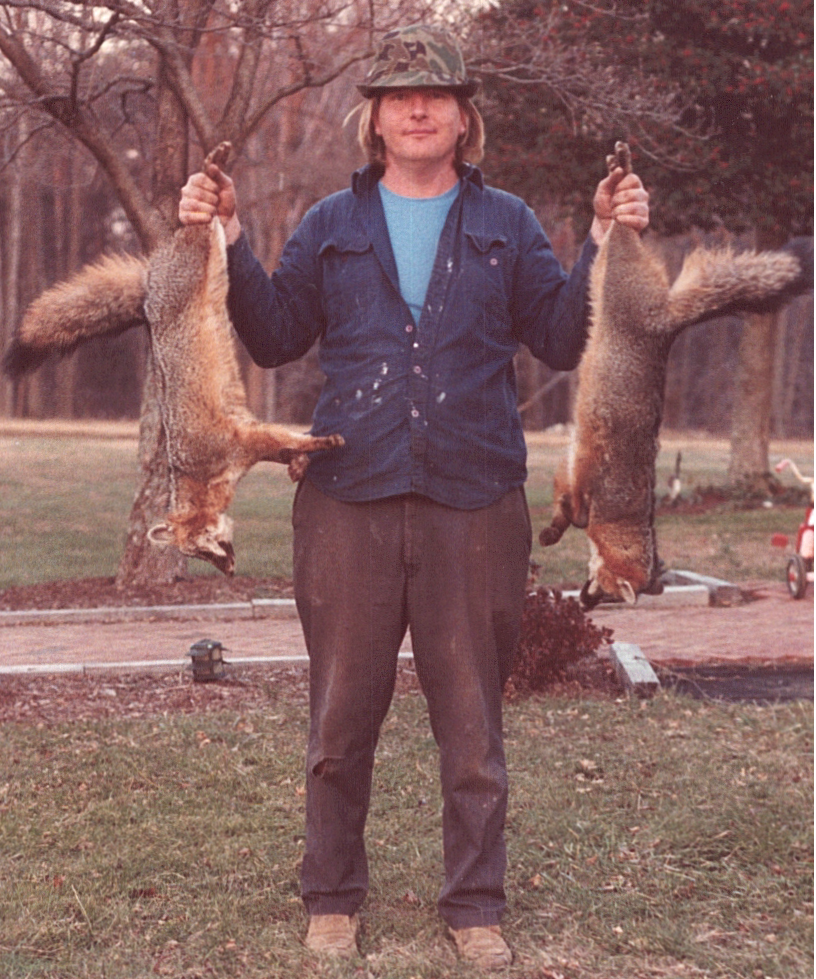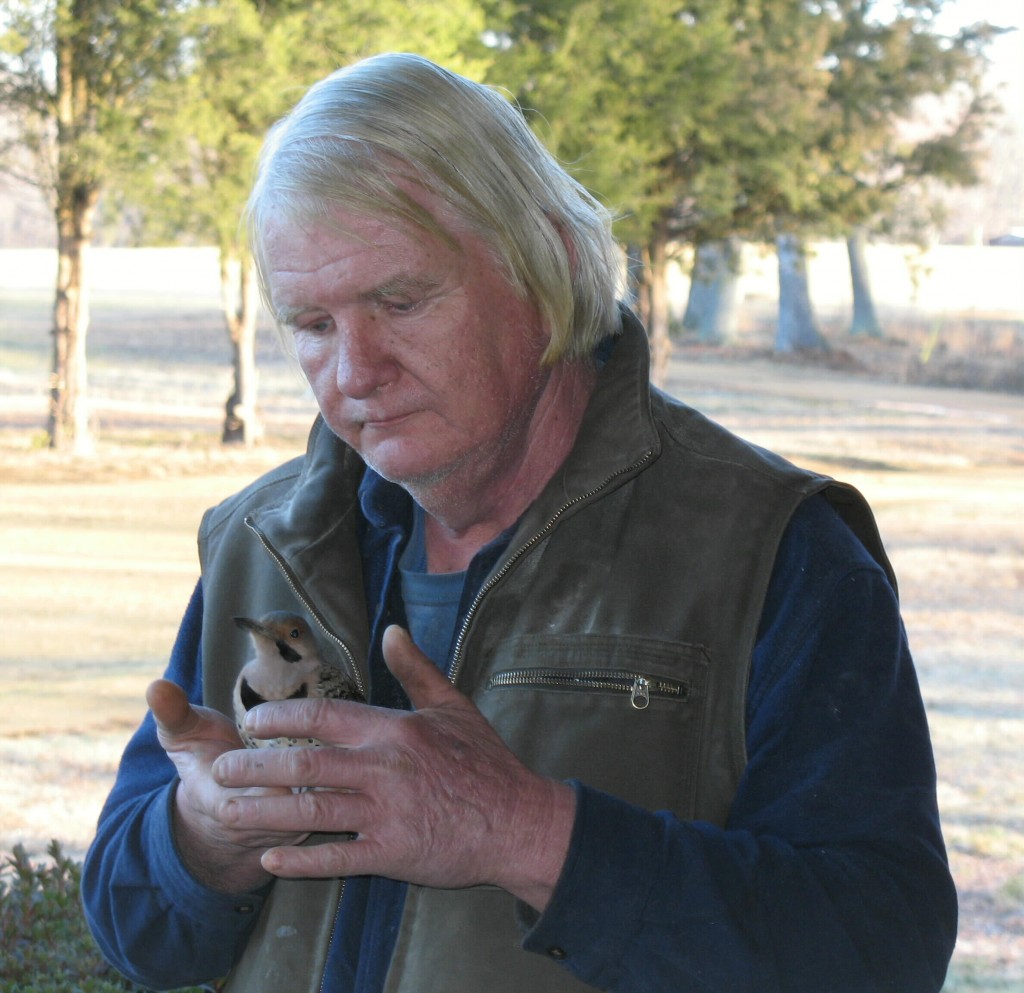Beekeep’s Blog
December 2, 2012
I’ve lived on the farm since 1958. I was six then and spent my time exploring the outdoors and all it’s wonders. I started hunting when I was ten and learned much about nature. Honeybees always fascinated me. Since I was six, every year, the first place that I would go upon arriving at the Charles County Fair, was to see the honeybee observation hive.
In the late eighties I added trapping to my outdoor recreation. The farm had become overrun with foxes and needed to be thinned out. Trapping foxes is a science and it requires beeswax. Beeswax is about the only thing you can use to coat the traps and keep them in working order, ready to snap, in the harsh environment you placed them in. That need for beeswax is when I started keeping bees.
Beekeeping is sort of like eating potato chips, you can’t only keep just one. Within a few years I had 24 hives. During the summer my bees would produce every month 1,800 pounds of a product I called Applecomb. I had access to broken bag sugar at a recovery center and fed my bees 50 gallons of sweetened apple juice every day. It made such a fine mead that I had no problem selling all I could produce, shipping it all over the country. I also bottled it in syrup bottles to use on pancakes and it flew off the store shelves as well. Then I met the “Bee Lady” Pat Wagner.
The building of custom machinery required to make the bees-in-a-box product consumed all my spare time. I gave up the Applecomb production and dedicated my time to making the easiest to use container of bees in the country for apitherapy use. I have no regrets and I don’t look back too often. I can’t believe that I have had the opportunity to help so many people over the past twenty years. Like most farmers, I don’t make a whole lot of money, but the satisfaction that I get from what I do makes it priceless. Yes, I must confess that the last twenty years has been fun.
For the past 20+ years I have been a volunteer, manning and supplying the honeybee observation hive, at the Charles County Fair. Getting new people, especially young people, interested in keeping bees has made it all worth while. I give the occasional talk to different organizations about bees and I enjoy the bee course that I teach each year. I hope to be able to keep serving my customers for another twenty years. Eventually the medical industry will come up with medicines that actually work and put me out of business. Until they do, and I pray they do, I will do my best to provide everyone with the finest product available.
Thanks for taking a look,
Greg Ferris
aka beekeep
December 9, 2012
I’m almost 61 and I can’t remember a fall when I didn’t go squirrel hunting. It is without a doubt my all time favorite outdoor sport. To justify my playing, I inspect my forest for downed trees for fire wood. Over the years of squirrel hunting I have also perfected how to cook them. You can’t think of them as rats with a furry tail; you have to think of them as an animal that feeds on a very healthy diet of nuts, berries, and fruits! That’s not hard to do once you have tasted them. I thought that I would share with you in this blog my favorite dish. The recipe is as follows:
Sciurus carolinensis Moelle Coulis
(Eastern Gray Squirrel with Marrow Gravy)
Ingredients: 6 – Squirrels, 1 – Large onion (chopped), 6 – 1 1/2 inch pieces of large beef marrow bones, 1 – Tablespoon of “Better than Bouillon” beef base, 1/2 – teaspoon black pepper, 1 to 2 – tablespoons of corn starch.
The trick to making this a good squirrel dish is to properly prepare the squirrels. Preferably use squirrels that are harvested with a 22 rather than a shotgun. The 22 does not leave lead pellets lodged in the meat to bite down on. First you skin the squirrels and remove the heads, tails, and feet. That’s the tough part. Then slit the squirrel down the belly and up through the rib cage. Run your knife through the pelvis bone and split it. Remove the entrails. Carefully peel back the meat off the ribs and cut the ribs off right at the back bone. I do all of this while I am hunting! It keeps me occupied while waiting for the next squirrel to come along. I carry a dish cloth to wipe my hands and a plastic bag to put the dressed squirrels in. Wash the dressed squirrels and cut them up into eight pieces. You should end up with four legs, two pieces of back bone, and two flaps of belly meat from each squirrel. Place the pieces in a stainless steel bowl, cover them with cold water, and add some salt. Refrigerate them over night.
At this point you can rinse them off and freeze them until you have enough to cook.
Rinse off the salt water from the squirrels and put then in a large pot along with the chopped onion, marrow bones, beef base, and cover with water. Add pepper to taste and bring to a boil. Once it comes to a boil reduce the heat to a simmer. Let it simmer for two to three hours. It is ready when the meat just starts to fall off the bone. The largest hind leg in the pot is the piece to look at. Older bigger squirrels are much tougher than the young ones. When they are done strain off the liquid with a colander. Put the liquid back on the stove. Remove the marrow bones from the squirrel. Remove the marrow and give the dog the bones. Strain the marrow through a screen strainer into the liquid by pushing it through the screen. Increase the heat and bring the liquid to a boil. Meanwhile add the corn starch to a cup of cold water and mix it with a fork until it is all suspended. Add to the liquid and stir constantly until the gravy thickens.
Turn off the heat and add the squirrels back to it. Don’t stir it in too much; you will tear all the meat off the bones. Serve over noodles or linguine or serve with home made biscuits and honey butter. A nice soft red wine goes well with this dish. It’s a finger food; you just suck the succulent meat off the bones.
Bon Appetite!
Beekeep
February 14, 2013
You just never know where beekeeping will take you. And it would have been truly sad to have missed this moment. I had come up to the house from the wood shop to get a hot cup of coffee. While inside I heard a loud thump on the window and just knew it was a bird. I went to look and there was a dazed flicker. It screamed like bloody murder when I picked it up but after a few gentle strokes of my bear paw hands it sensed that I meant no harm. Five or ten minutes later I placed the bird in the top of an azalea bush to totally recover. The woodpeckers are the guardians of our forests. They work from sun up to sun down scouring the trees for grubs and other pests. Today I was able to make a payment on the debt I owed them.
I think therefore I bee!
beekeep






